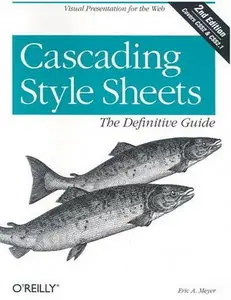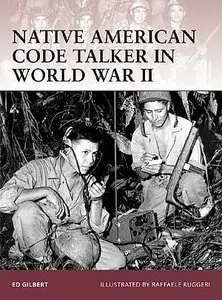Dieses eBooklet hilft Ihnen dabei, Teams zu führen, die effektiv und erfolgreich sind. Sie lernen unter anderem, wie Sie Einzelkämpfer in Teamspieler verwandeln und wie Sie Ihr "Dream-Team" sicher und zielorientiert führen.
| Su | Mo | Tu | We | Th | Fr | Sa |
|---|---|---|---|---|---|---|
| 27 | 28 | 29 | 30 | 1 | 2 | 3 |
| 4 | 5 | 6 | 7 | 8 | 9 | 10 |
| 11 | 12 | 13 | 14 | 15 | 16 | 17 |
| 18 | 19 | 20 | 21 | 22 | 23 | 24 |
| 25 | 26 | 27 | 28 | 29 | 30 | 31 |
Attention❗ To save your time, in order to download anything on this site, you must be registered 👉 HERE. If you do not have a registration yet, it is better to do it right away. ✌

SpicyMags.xyz

SpicyMags.xyz
Teams bilden und führen
Date: 3 Oct 2009 23:39:44
Empfehlenswerte Wissenschafts-Podcasts - Volker Riebartsch
Date: 3 Oct 2009 23:11:55
Empfehlenswerte Wissenschafts-Podcasts - Volker Riebartsch
Haufe | ISBN: none | 2009 | 16 pages | PDF | 1.6 MB
In diesem eBook stellen wir Ihnen einige empfehlenswerte Podcasts vor, die Sie beispielsweise in iTunes abonnieren oder direkt ansurfen können.
PHP for Absolute Beginners
Date: 3 Oct 2009 23:10:21
Jason Lengstorf,"PHP for Absolute Beginners"
Apress (9-2009) | PDF | 400 pages | ISBN:1430224738 | 6.64Mb(rar)
Apress (9-2009) | PDF | 400 pages | ISBN:1430224738 | 6.64Mb(rar)
Get started in web development using PHP. Even if you've never programmed before, author Jason Lengstorf introduces you to PHP by building a PHP-based blogging site while covering all the good coding practices and skills that you'll need when you start your own projects.
Privatbuchführung mit Excel - Horst-Dieter Radke
Date: 3 Oct 2009 23:07:02
In diesem eBooklet wird Ihnen gezeigt, wie in einer Excel-Anwendung private Ein- und Ausgaben monatlich erfasst und bestimmten Kategorien zugeordnet werden. Wichtige Auswertungen stehen Ihnen dabei jederzeit abrufbereit zur Verfügung. Einige Daten visualisieren Ihnen die Ergebnisse als Diagramm.
Air War Over Southeast Asia. A Pictorial Record vol. 2 1967-1970
Date: 3 Oct 2009 21:23:22
Air War Over Southeast Asia. A Pictorial Record vol. 2 1967-1970 (Armor Specials 6036) By Lou Drendel
Publisher: Squadron/Signal Publications 1983 | 80 Pages | ISBN: 0897471407 | PDF | 25 MB
Publisher: Squadron/Signal Publications 1983 | 80 Pages | ISBN: 0897471407 | PDF | 25 MB
Cascading Style Sheets: The Definitive Guide, 2nd Edition
Date: 3 Oct 2009 21:06:24
Eric A. Meyer, "Cascading Style Sheets: The Definitive Guide, 2nd Edition"
Publisher: O'Reilly Media, Inc.; 2nd edition | 2004-01-01 | 528 Pages | ISBN: 0596005253 | CHM | 4.5 MB
Publisher: O'Reilly Media, Inc.; 2nd edition | 2004-01-01 | 528 Pages | ISBN: 0596005253 | CHM | 4.5 MB
Blumen aus Perlen. Gestickte Blüten - geformte Bänder
Date: 3 Oct 2009 20:52:00
Blumen aus Perlen. Gestickte Blüten - geformte Bänder By Klara Sommer
Publisher: Augustus Verlag 2001 | 32 Pages | ISBN: 3804308910 | PDF | 6 MB
Publisher: Augustus Verlag 2001 | 32 Pages | ISBN: 3804308910 | PDF | 6 MB
Western and Chinese New Year's Celebrations (Holidays and Celebrations)
Date: 3 Oct 2009 20:12:52
Western and Chinese New Year's Celebrations (Holidays and Celebrations)
By Elizabeth A. Dice
Publisher: Chelsea House Publications | 120 pages | 2009-06-30 | ISBN: 1604130938 | PDF | 8.53 MB
By Elizabeth A. Dice
Publisher: Chelsea House Publications | 120 pages | 2009-06-30 | ISBN: 1604130938 | PDF | 8.53 MB
Warrior 127, Native American Code Talker in World War II
Date: 3 Oct 2009 20:12:02
Warrior 127, Native American Code Talker in World War II
Author: Ed Gilbert , Illustrated by: Raffaele Ruggeri
Osprey Publishing | April 22, 2008 | ISBN-10: 1846032695 | 64 Pages | PDF | 28.3 MB
Author: Ed Gilbert , Illustrated by: Raffaele Ruggeri
Osprey Publishing | April 22, 2008 | ISBN-10: 1846032695 | 64 Pages | PDF | 28.3 MB
Osprey Publishing Description:
'Were it not for the Navajo Code Talkers the Marines would never have taken Iwo Jima and other places' (Anonymous, Marine Corps signal officer). Ed Gilbert uses personal interviews with veterans to tell their fascinating story. Beginning with the first operational use of Native American languages in World War I, he explores how in World War II the US again came to employ this subtle, but powerful 'weapon.' Despite all efforts, the Japanese were never able to decode their messages and the Navajo code talkers contributed significantly to US victories in the Pacific. Approximately 400 Navajos served in this crucial role. Their legend of the 'code talker' has been celebrated by Hollywood in films, such as Windtalkers, and this book reveals the real-life story of their extraordinary involvement in World War II.
Big-Box Swindle: The True Cost of Mega-Retailers and the Fight for America's Independent Businesses
Date: 3 Oct 2009 19:38:11
Big-Box Swindle: The True Cost of Mega-Retailers and the Fight for America's Independent Businesses
Publisher: Beacon Press | ISBN: 0807035009 | edition 2006 | PDF | 318 pages | 7,3 mb
Publisher: Beacon Press | ISBN: 0807035009 | edition 2006 | PDF | 318 pages | 7,3 mb
n less than two decades, large retail chains have become the most powerful corporations in America. In this deft and revealing book, Stacy Mitchell illustrates how mega-retailers are fueling many of our most pressing problems, from the shrinking middle class to rising pollution and diminished civic engagement—and she shows how a growing number of communities and independent businesses are effectively fighting back.
Fortress 075, The Forts of New France in Northeast America 1600-1763
Date: 3 Oct 2009 19:32:20
Fortress 075, The Forts of New France in Northeast America 1600-1763
Author: René Chartrand, Illustrated by: Brian Delf
Osprey Publishing | May 20, 2008 | ISBN-10: 1846032555 | 64 Pages | PDF | 28.6 MB
Author: René Chartrand, Illustrated by: Brian Delf
Osprey Publishing | May 20, 2008 | ISBN-10: 1846032555 | 64 Pages | PDF | 28.6 MB
Osprey Publishing Description:
'New France' consisted of the area colonized and ruled by France in North America. This title takes a look at the lengthy chain of forts built by the French to guard the frontier in the American northeast, including Sorel, Chambly, St Jean, Carillon (Ticonderoga), Duquesne (Pittsburgh, PA), and Vincennes. These forts were of two types: the major stone forts, and other forts made of wood and earth, all of which varied widely in style from Vauban-type elements to cabins surrounded by a stockade. Some forts, such as Chambly, looked more like medieval castles in their earliest incarnations. René Chartrand examines the different types of forts built by the French, describing the strategic vision that led to their construction, their impact upon the British colonies and the Indian nations of the interior, and the French military technology that went into their construction.
The Gift of Years: Growing Older Gracefully
Date: 3 Oct 2009 18:34:22
Joan Chittister, "The Gift of Years: Growing Older Gracefully"
Bluebridge | 2008 | ISBN: 1933346108 | 240 pages | PDF | 1 MB
Bluebridge | 2008 | ISBN: 1933346108 | 240 pages | PDF | 1 MB
Heinkel He111
Date: 3 Oct 2009 18:33:33
Heinkel He111 (Waffen-Arsenal 20) By Horst Scheibert
Publisher: Podzun-Pallas 1976 | 52 Pages | ISBN: 3790900419 | PDF | 40 MB
Publisher: Podzun-Pallas 1976 | 52 Pages | ISBN: 3790900419 | PDF | 40 MB
The Smarter Preschooler: Unlocking Your Child's Intellectual Potential
Date: 3 Oct 2009 18:20:45
Renee Mosiman MA, Mike Mosiman, "The Smarter Preschooler: Unlocking Your Child's Intellectual Potential"
Brighter Insights | 2009 | ISBN: 0981642659 | 224 pages | PDF | 1,1 MB
Brighter Insights | 2009 | ISBN: 0981642659 | 224 pages | PDF | 1,1 MB















